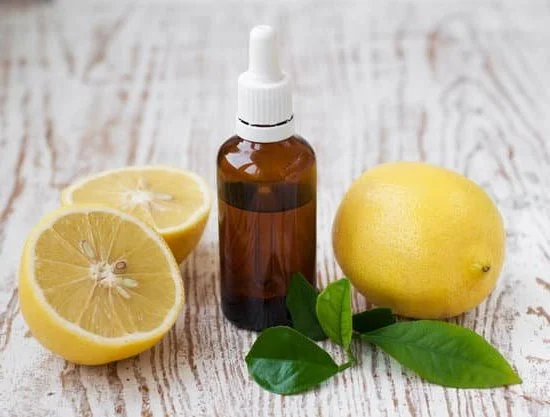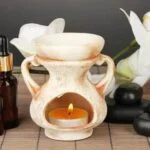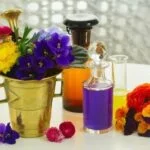Are you familiar with the elements of aromatherapy meaning? Aromatherapy is a holistic healing treatment that uses natural plant extracts to promote health and well-being. This introductory section will provide an in-depth exploration of the power of scent and how it can affect the mind, body, and spirit.
Aromatherapy has been used for centuries as a therapeutic practice, and its benefits are widely recognized in the field of alternative medicine. By understanding the meaning of aromatherapy, individuals can access a comprehensive overview of its history, origins, key elements, scientific basis, therapeutic benefits, and practical application in daily life.
The use of essential oils, carrier oils, and aromatic compounds are the key elements that make up aromatherapy. These natural substances contain various healing properties that can positively impact overall wellness. As we delve into this topic further, we will explore how these elements play a crucial role in balancing mind, body and spirit through scent therapy. So let’s embark on this aromatic journey together and discover the healing power of aromatherapy.
Understanding the Meaning of Aromatherapy
Aromatherapy is a holistic healing treatment that uses natural plant extracts to promote health and well-being. It harnesses the therapeutic properties of essential oils, aromatic compounds, and carrier oils to enhance physical, emotional, and spiritual health. The practice of aromatherapy involves various methods of application, including inhalation, topical application, and diffusion. Understanding the elements of aromatherapy meaning is crucial in maximizing its benefits for overall wellness.
One of the key elements of aromatherapy is essential oils. These highly concentrated plant extracts are used to address a wide range of physical and emotional ailments. Each essential oil has unique properties and benefits, making them versatile tools for promoting health and relaxation. Carrier oils are another important element in aromatherapy. These vegetable-based oils help dilute essential oils for safe topical application and are often used as a base for massage blends.
Aromatic compounds play a significant role in aromatherapy as well. These natural chemicals are responsible for the distinctive scents of plants and flowers, which contribute to their therapeutic effects. When inhaled or absorbed through the skin, aromatic compounds can have a profound impact on mood, stress levels, and cognitive function. By understanding these key elements of aromatherapy meaning, individuals can make informed choices when selecting products and creating personalized blends for their well-being.
| Aromatherapy Elements | Description |
|---|---|
| Essential Oils | Highly concentrated plant extracts with unique therapeutic properties. |
| Carrier Oils | Vegetable-based oils used to dilute essential oils for safe topical application. |
| Aromatic Compounds | Natural chemicals responsible for the scents of plants and flowers, with profound effects on mood and cognitive function. |
The History and Origins of Aromatherapy
Aromatherapy has been used for centuries as a natural healing practice, with its origins dating back to ancient civilizations. The history of aromatherapy can be traced back to the ancient Egyptians, who were known for using aromatic plants and essential oils for medicinal, spiritual, and cosmetic purposes.
They believed in the power of scent to heal both the body and the soul. The use of aromatics such as myrrh, frankincense, and cedarwood was an integral part of their embalming rituals and religious ceremonies.
The Greeks also made significant contributions to the development of aromatherapy. Renowned physician Hippocrates, often referred to as the “father of medicine,” recognized the therapeutic properties of aromatic plants and used them in his treatments. The term “aromatherapy” itself is derived from the Greek words “aroma,” meaning fragrance or spice, and “therapeia,” meaning healing or therapy.
In India, the ancient practice of Ayurveda also incorporates elements of aromatherapy meaning into its holistic approach to health and wellness. Essential oils such as sandalwood, lavender, and rose have been used for their healing properties in Ayurvedic medicine for thousands of years.
These ancient roots demonstrate that aromatherapy is not just a fleeting trend, but a time-honored tradition with deep cultural significance. Its rich history has laid the foundation for modern-day aromatherapy practices that continue to thrive today.
- Ancient Egyptian Use of Aromatic Plants
- Contributions from Greek Physician Hippocrates
- Incorporation into Ayurvedic Medicine
The Key Elements of Aromatherapy
Aromatherapy utilizes various key elements to harness the power of scent for therapeutic purposes. These elements form the foundation of aromatherapy practice and play a crucial role in its effectiveness. Understanding the significance of essential oils, carrier oils, and aromatic compounds is essential in comprehending the true meaning and potential of aromatherapy.
Essential Oils
Essential oils are highly concentrated plant extracts that retain the natural aroma and beneficial properties of the source plant. These oils are extracted through methods such as steam distillation or cold pressing, resulting in potent substances with diverse therapeutic properties. Each essential oil carries its own distinct scent and healing benefits, making them versatile tools in aromatherapy practice.
Carrier Oils
Carrier oils serve as a medium to dilute essential oils before they are applied to the skin. These base oils are often used to carry and enhance the absorption of essential oils into the body, as well as to mitigate any potential skin irritation that may arise from direct contact with undiluted essential oils. Common carrier oils include jojoba oil, coconut oil, and almond oil, each offering its own unique nourishing properties for the skin.
Aromatic Compounds
Aromatic compounds are organic molecules responsible for creating fragrances in plants. These compounds are found in abundance within essential oils, contributing to their distinctive scents and therapeutic effects. Aromatherapists leverage these aromatic compounds to create specific blends and synergies that target various physical and emotional ailments, expanding the potential applications of aromatherapy beyond mere pleasant smells.
Incorporating these key elements into aromatherapy practices forms a solid foundation for utilizing scent as a tool for holistic wellness. By understanding how essential oils, carrier oils, and aromatic compounds work together, individuals can unlock the full potential of aromatherapy for promoting overall well-being.
The Science Behind Aromatherapy
Aromatherapy is a holistic healing treatment that uses natural plant extracts, known as essential oils, to promote physical and emotional health. The elements of aromatherapy meaning include the use of essential oils, carrier oils, and aromatic compounds to create a therapeutic environment. These elements work together to stimulate the olfactory system in the brain, which plays a crucial role in how scent affects the mind and body.
Essential oils are highly concentrated plant extracts that retain the natural smell and flavor of their source. They are typically obtained through distillation or cold-pressing methods. Carrier oils, on the other hand, are used to dilute essential oils before they are applied to the skin. Aromatic compounds are also found in essential oils and are responsible for their distinct scents.
One of the key elements of aromatherapy meaning is understanding how scent affects the brain and body. When essential oils are inhaled, they can directly impact the limbic system – the area of the brain that controls emotions and memories. This can lead to various physiological effects such as stress reduction, improved mood, and relaxation. Additionally, when essential oils are absorbed through the skin during massage or other applications, they can provide localized pain relief and anti-inflammatory benefits.
| Elements | Description |
|---|---|
| Essential Oils | Highly concentrated plant extracts obtained through distillation or cold-pressing. |
| Carrier Oils | Used to dilute essential oils before application to the skin. |
| Aromatic Compounds | Found in essential oils and responsible for their distinct scents. |
Exploring the Therapeutic Benefits of Aromatherapy
Aromatherapy, at its core, is the use of essential oils and aromatic compounds to promote physical and emotional well-being. The therapeutic benefits of aromatherapy are wide-ranging and can have a profound impact on stress relief, pain management, and emotional well-being. Understanding the elements of aromatherapy meaning can provide insight into how scent therapy can be effectively used as a holistic approach to health and wellness.
The key elements of aromatherapy include essential oils, carrier oils, and aromatic compounds. Essential oils are highly concentrated plant extracts that are used for their therapeutic properties and aromatic qualities. Carrier oils, on the other hand, are used to dilute essential oils before applying them to the skin. Aromatic compounds, found in both essential and carrier oils, are responsible for the distinct scents that contribute to the overall therapeutic experience of aromatherapy.
When it comes to stress relief, certain essential oils such as lavender, chamomile, and bergamot have been found to have calming and relaxing effects on the mind and body. Aromatherapy can help reduce feelings of anxiety and tension, promoting a sense of calmness and tranquility.
Additionally, when used for pain management, essential oils like eucalyptus, peppermint, and ginger can provide natural relief for headaches, muscle aches, and joint discomfort. Not only does aromatherapy offer physical relief from pain, but it also addresses the emotional aspects often associated with chronic or acute pain.
In terms of emotional well-being, aromatherapy has the potential to uplift mood, ease feelings of sadness or grief, and promote a positive mindset. Certain essential oils such as jasmine, rosemary, and ylang-ylang are known for their mood-enhancing properties.
By incorporating these into daily life through diffusers or inhalation techniques, individuals can experience an improved sense of emotional balance and overall well-being. Understanding these therapeutic benefits is crucial in harnessing the full potential of aromatherapy for holistic health care.
Incorporating Aromatherapy Into Daily Life
Benefits of Essential Oil Blends
One of the key elements of aromatherapy is the use of essential oil blends to promote overall well-being. Essential oils are highly concentrated plant extracts that are known for their therapeutic properties.
When blended together, these oils can create powerful synergies that enhance their individual benefits. For example, a blend of lavender, bergamot, and ylang-ylang oils may be used to promote relaxation and reduce stress, while a blend of peppermint, eucalyptus, and rosemary oils can help alleviate symptoms of congestion and respiratory issues.
Using Diffusers for Aromatherapy
Diffusers are popular tools for incorporating aromatherapy into daily life. These devices work by dispersing essential oil molecules into the air, allowing them to be inhaled and absorbed by the body. There are several types of diffusers available, including ultrasonic, nebulizing, heat, and evaporative diffusers. Each type has its own unique way of dispersing essential oils and may be suitable for different environments or preferences.
Inhalation Techniques for Aromatherapy
In addition to using diffusers, there are various inhalation techniques that can be employed for aromatherapy. Direct inhalation involves inhaling essential oil vapors from a bottle or directly from the palms of the hands. Steam inhalation involves adding a few drops of essential oils to hot water and inhaling the steam.
Personal inhalers are also a convenient option for on-the-go aromatherapy use. These techniques allow for quick absorption and immediate effects, making them ideal for addressing acute conditions such as headaches or nausea.
Incorporating aromatherapy into daily life through essential oil blends, diffusers, and various inhalation techniques can provide numerous benefits for overall well-being. Whether it’s promoting relaxation at home or enhancing focus in the workplace, the wide range of aromatic options allows individuals to address their specific needs through scent therapy. By understanding how to effectively use these methods, individuals can experience the full elements of aromatherapy meaning in their lives.
The Role of Aromatherapy in Holistic Wellness
Aromatherapy has been used for centuries as a natural remedy to promote holistic wellness by balancing the mind, body, and spirit. The therapeutic benefits of aromatherapy are derived from the elements of aromatherapy meaning, which include essential oils, carrier oils, and aromatic compounds. These key elements form the foundation of scent therapy and have been known to have a profound impact on emotional well-being, stress relief, and pain management.
Essential oils are the backbone of aromatherapy and are highly concentrated plant extracts that capture the essence of their botanical source. Each essential oil contains unique properties that can affect mood, emotions, and physical well-being. Carrier oils are used to dilute essential oils before applying them to the skin in massage or skincare routines. Aromatic compounds, such as terpenes and phenols, are responsible for the distinct aroma of essential oils and contribute to their therapeutic effects when inhaled.
The use of aromatherapy as a holistic wellness practice extends beyond its pleasant fragrance. The science behind aromatherapy reveals that scent affects the brain and body on a physiological level. When inhaled, aromatic compounds stimulate olfactory receptors in the nose, sending signals to the limbic system – the area of the brain that controls emotions and memory. This process can elicit various responses in the body, such as relaxation or alertness, making aromatherapy an effective tool for promoting overall well-being.
Through incorporating essential oil blends, diffusers, and inhalation techniques into daily life, individuals can experience the benefits of aromatherapy in a practical way. Whether through topical application or inhalation, harnessing the power of scent therapy can contribute to achieving a balanced state of mind and body while addressing specific health concerns. As an integral component of holistic wellness practices, aromatherapy offers a natural approach to promoting harmony within oneself.
Aromatherapy for Beginners
In conclusion, the elements of aromatherapy meaning encompass a wide range of topics that shed light on the power and potential of scent therapy. From its ancient origins to its modern-day applications, aromatherapy offers a holistic approach to wellness that targets both the physical and emotional well-being of individuals. The key elements of aromatherapy, including essential oils, carrier oils, and aromatic compounds, provide the building blocks for creating therapeutic blends that can address various health concerns.
Understanding the science behind aromatherapy is crucial in appreciating how scent affects the brain and body. Research has shown that certain essential oils have a direct impact on mood, stress levels, and even pain management. By incorporating aromatherapy into daily life through diffusers, inhalation techniques, and personalized essential oil blends, individuals can experience the transformative power of scent in their holistic wellness journey.
For beginners looking to delve into aromatherapy, it is important to approach the selection and usage of essential oils with caution. Safety should always be a priority when using potent plant extracts, and proper education on dilution ratios, application methods, and contraindications is essential. With the right knowledge and guidance, anyone can harness the benefits of aromatherapy to enhance their overall well-being and cultivate a deeper connection with their mind, body, and spirit.
Frequently Asked Questions
What Are the 4 Elements of Aromatherapy?
The four elements of aromatherapy are essential oils, massage therapy, inhalation, and topical application. Essential oils are the core of aromatherapy and are derived from plants to promote physical and psychological well-being.
What Are the Key Concepts of Aromatherapy?
The key concepts of aromatherapy include the use of natural essential oils to enhance mood, promote relaxation, reduce stress, and alleviate physical discomfort. Aromatherapists believe in the holistic approach to health and healing using nature’s remedies.
What Is the Meaning of Aromatherapy?
Aromatherapy is a holistic healing treatment that uses natural plant extracts to promote health and well-being. It aims to improve physical, mental, and emotional health through the use of essential oils in various applications like massage or inhalation.

Are you looking for a natural way to improve your health and wellbeing?
If so, aromatherapy may be the answer for you.





